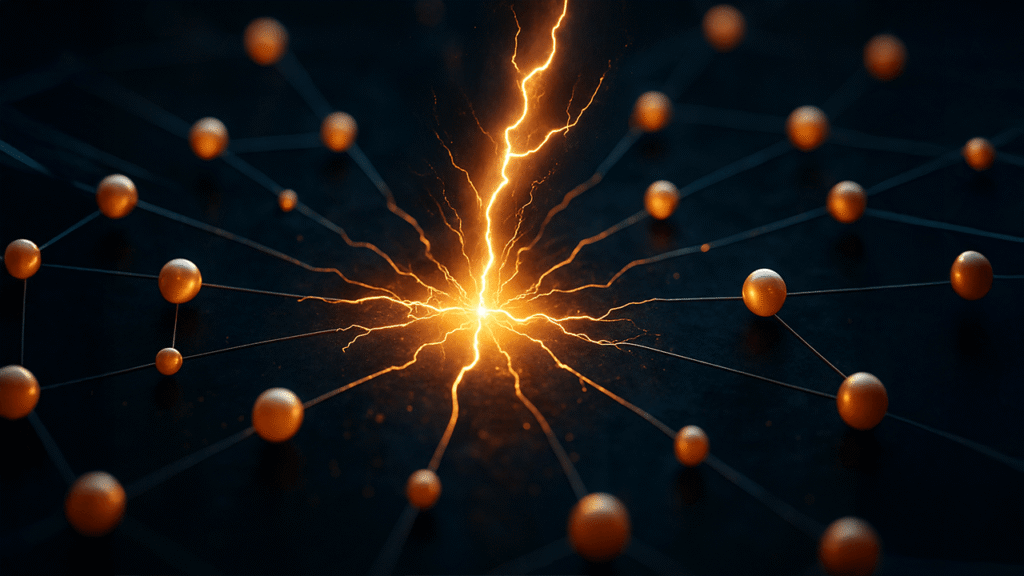Understanding the Lightning Network: Recent Trends in Capacity and Centralization
The Lightning Network, designed to facilitate quicker and cheaper Bitcoin transactions, has recently experienced notable changes. Data reveals a substantial pullback in both capacity and channel count over the past year, signaling a shift in how this second layer solution operates. This article delves into this trend, exploring the implications of declining capacity, increased centralization, and what this means for the future of Bitcoin transactions.
Declining Capacity in the Lightning Network
Recent insights indicate that there has been over a 30% drop in Bitcoin capacity within the Lightning Network. This decline points towards a diminishing number of available channels for users to transact with, which can impact the overall efficiency of the network. Initially designed to reduce congestion on the Bitcoin blockchain, the current situation raises concerns about the network’s ability to handle transactions as effectively as it once did. Factors contributing to this decline include reduced user engagement in Bitcoin transactions and market volatility, leading to a more cautious approach from node operators.
Increased Centralization Concerns
As the Lightning Network experiences a decrease in channel counts, an associated trend towards centralization has become apparent. This centralization is largely evident in the formation of clusters around a small number of dominant node operators, specific hosts, and certain geographic hubs. This concentration of network activity poses a significant challenge, as decentralization is a core tenet of the cryptocurrency ethos. Increased centralization can lead to single points of failure, potentially compromising the resilience and security that users expect from decentralized networks.
Geographic Distribution of Node Operators
The geographic distribution of Lightning Network node operators perpetuates centralization trends. A large percentage of operators are located in specific regions, leading to an imbalanced network structure. While the network was initially praised for its global accessibility, the clustering of nodes in particular areas can restrict access and functionality for users in less-represented regions. Understanding the geographic dispersion of nodes is crucial to addressing these challenges and promoting a more decentralized network environment.
Implications for Users
For end-users, the implications of a shrinking and more centralized Lightning Network can be profound. Users may experience higher fees, slower transaction times, and potential liquidity issues as the number of channels declines. This may deter new users from joining the network, negatively impacting its growth potential. Furthermore, as the network becomes less decentralized, users may lose some of the trust and autonomy they initially had when engaging with Bitcoin transactions, which could dissuade broader adoption in the long run.
Addressing Centralization Issues
To combat the trends of centralization and declining capacity in the Lightning Network, several strategies can be employed. Encouraging a more diverse range of node operators through incentivization could help redistribute the network activity. Additionally, developing solutions that facilitate easier onboarding for new users can stimulate growth, subsequently increasing channel counts and capacity. By fostering an environment that supports decentralization, the Lightning Network can work toward recovering its former robustness.
The Future of the Lightning Network
Looking ahead, the trajectory of the Lightning Network will depend on how effectively stakeholders can address these challenges. While the current trends of declining capacity and centralization present significant hurdles, they also offer opportunities for innovation and improvement. By prioritizing decentralization, enhancing user experience, and actively engaging the community, the Lightning Network can evolve to meet the demands of a changing cryptocurrency landscape. As it stands, the future of this technology remains bright, contingent upon collective efforts to sustain its core decentralized principles while adapting to the market’s needs.
By summarizing these trends and analyzing their implications, this article aims to provide insights to users navigating the evolving landscape of the Lightning Network. As the ecosystem continues to develop, staying informed and engaged will be key to unlocking its full potential for faster, more efficient Bitcoin transactions.
















